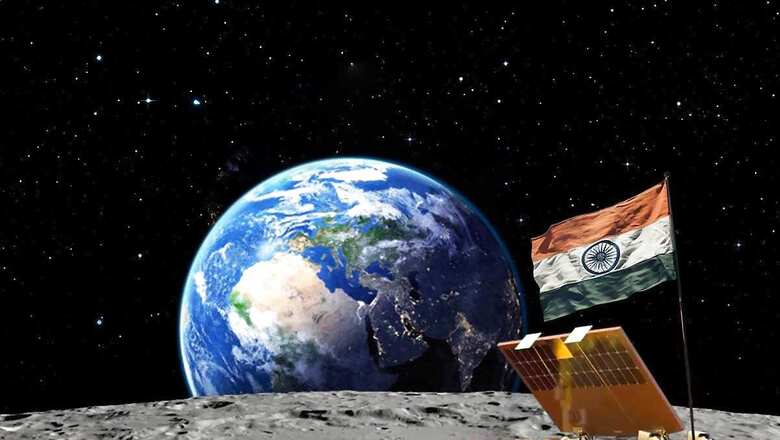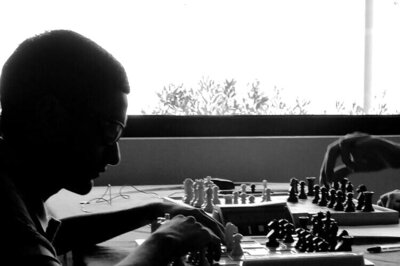
views
When Chandrayaan-3 began its much-awaited descent on the moon on August 23, it was a stark throwback to that night of September 2019 when India’s first-ever attempt to touch down on the lunar south pole abruptly ended in despair.
Baffled by what may have gone wrong, people remained glued to their screens trying to understand what had just happened. Tension hung in the air at the Mission Control Complex (MOX) in Bengaluru, with dejection written large on the faces of the team. Former ISRO chairman Dr K Sivan sat down to get closer to the mike and, with his palms resting on his forehead, said the space agency had lost communication with the Vikram lander. “The data is being analysed,” said the senior scientist despondently.
It was perhaps the agony of not being able to succeed in the last crucial 15 minutes of the landing that egged Indian scientists to ensure that they leave no stone unturned this time. One more setback, and India would have risked falling behind in the global Lunar Race 2.0.
Back then, Prime Minister Narendra Modi was there to comfort an inconsolable Sivan and had given him a reassuring hug. This time, however, the prime minister will greet an elated mission team when he visits the ISRO Telemetry Tracking and Command Network (ISTRAC) in Bengaluru on Saturday.
Prime Minister Modi, who is flying in directly from Greece, is scheduled to meet and interact with the mission team at 7.15 am. He will be briefed about the findings and progress in the Chandrayaan-3 mission.
Decades of perseverance
The success of Chandrayaan-3 was also a vindication of sorts for scientists who had dedicated their life to the goal. It was not a one-off mission, but one envisioned over two decades ago. Former ISRO scientists said the discussions had begun prior to the 2000s.
But back then, the space agency neither had the technology nor the powerful rockets to execute an inter-planetary programme. Only the US and Russia dominated the space exploration programme.
“We had proposed a moon mission. But then we came to the conclusion that it needed more time. So, we left it to the future and decided to concentrate on building a lunar probe consisting of an orbiter. The efforts culminated with the launch of India’s first mission to the moon, Chandrayaan-1,” said Dr Madan Lal, former deputy director of the Vikram Sarabhai Space Centre.
Lal had designed and fabricated the moon impact probe (MIP), which was India’s probe to strike the lunar south pole in a controlled manner in 2008. It marked the beginning of India’s interplanetary exploration programme.
The enormous data collected over a year led ISRO to confirm the presence of water in the lunar soil. “We have had our share of failures and successes, and learnt a lot from it. But it has been a marvellous journey so far. We have reached the moon and become the first-ever to land on the south pole. Now we must look forward,” he said.
Turning failure into success
The Chandrayaan-2 setback along with the more recent failed Russian attempt ensured that the team at ISRO was apprehensive till Chandrayaan-3 actually made the soft landing. There was no doubt that expectations were palpable, but the mission team studiously contained them to concentrate on the larger job at hand. This meant that the team along with 1.3 billion Indians and the world went from being on tenterhooks to absolute euphoria within a span of 19 minutes.
At the Indian Tracking, Telemetry and Command Network (ISTRAC) in Bengaluru, scientists and workers patiently waited and erupted in joy only after ISRO chief S Somanath announced the mission’s success shortly after touchdown.
“We have shown that we can take on failure, learn from it and come back stronger with a successful mission. No doubt there were concerns this time too. The moon landing had turned out to be more challenging than we thought. But if ISRO had waited to be 100 percent ready, it would have waited forever. So, instead it reworked the mission, improved the sensors, conducted multiple tests and went ahead with it,” said Dr P Sreekumar, former director of the space science programme office at ISRO.
From sending its first rocket into space in November 1963 to becoming the first country in the world to travel 3.4 lakh km to land on the moon’s south pole, India’s space agency has come far. It is now raring to put its astronauts into space for the first time with Gaganyaan in 2024, and launch a mission to the sun’s L1 point and Venus.
“Chandrayaan-3 was tremendously important, and it has opened new opportunities for India as a nation that can successfully land on a celestial body. It will not just advance our scientific exploration, but propel India to becoming a key player in the global lunar race,” said the senior scientist.



















Comments
0 comment